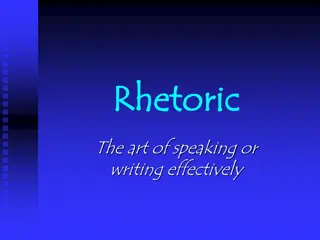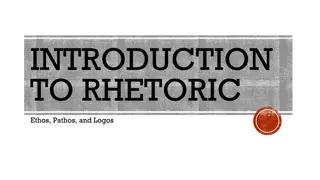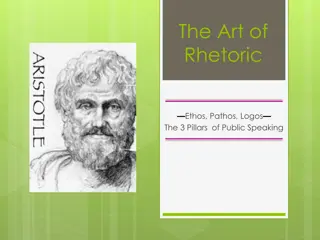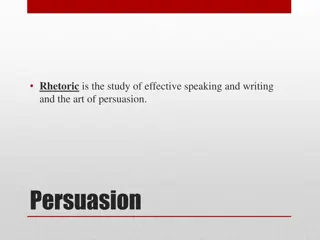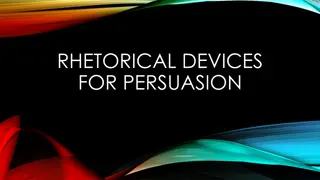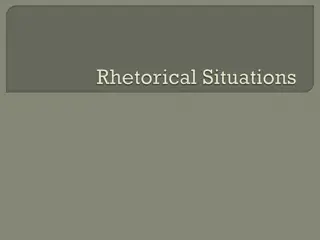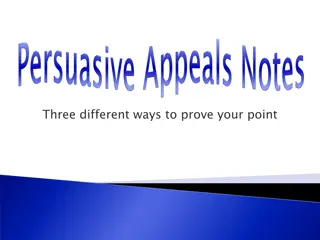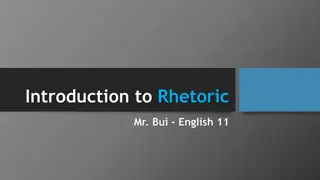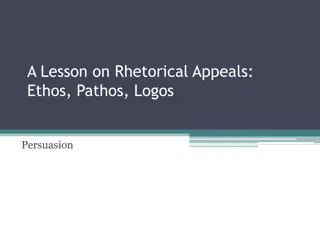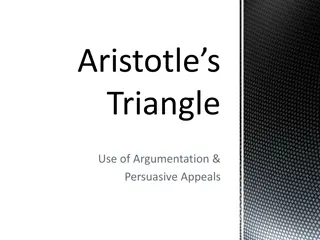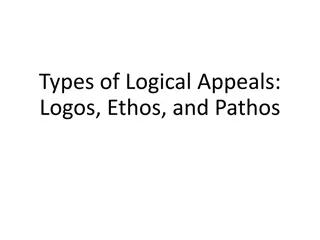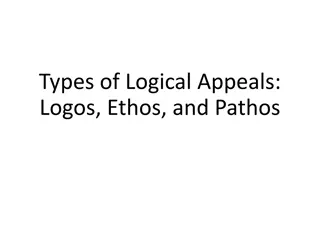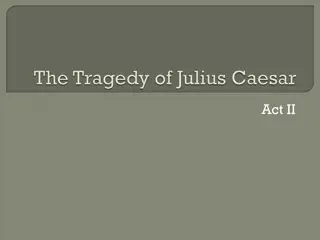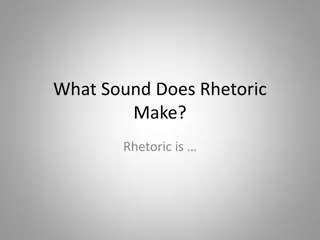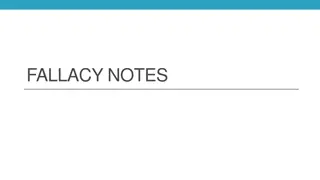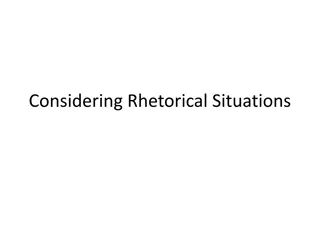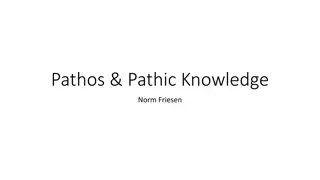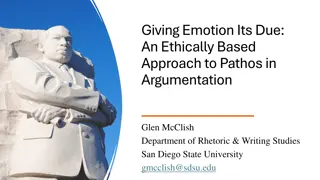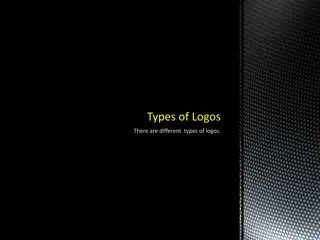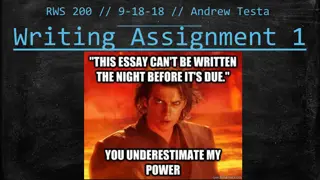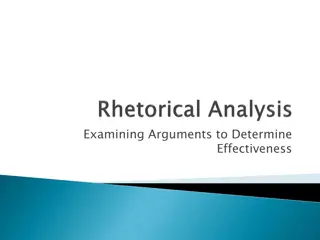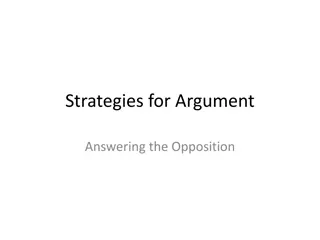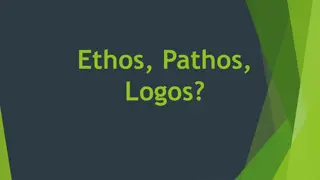Understanding Rhetoric: Ethos, Logos, Pathos in Persuasion
Rhetoric explores the art of persuasive communication, emphasizing three key components: Ethos (credibility), Logos (logic/facts), and Pathos (emotion). Understanding the three types of rhetoric and persuasive appeals can enhance one's ability to craft compelling arguments. Through examples, students can learn how to identify and employ rhetorical devices effectively.
Download Presentation

Please find below an Image/Link to download the presentation.
The content on the website is provided AS IS for your information and personal use only. It may not be sold, licensed, or shared on other websites without obtaining consent from the author. Download presentation by click this link. If you encounter any issues during the download, it is possible that the publisher has removed the file from their server.
E N D
Presentation Transcript
RHETORIC Ethos, Logos, Pathos
This Lesson: Review: What is Rhetoric? What are the 3 types of Rhetoric? What are the 3 Persuasive Appeals?
What is Rhetoric? the art of effective or persuasive speaking or writing, especially the exploitation of figures of speech and other rhetorical devices. language designed to have a persuasive or impressive effect, but which is often regarded as lacking in sincerity or meaningful content.
The 3 Types of Rhetoric Judicial Rhetoric: The Past Demonstrative Rhetoric: The Present Deliberative Rhetoric: The Future
The 3 Persuasive Appeals Ethos (credibility): an appeal to ethics, and it is a means of convincing someone of the character or credibility of the persuader. Pathos (emotion): an appeal to emotion, and is a way of convincing an audience of an argument by creating an emotional response. Logos (logic/facts): an appeal to logic, and is a way of persuading an audience by reason.
Argue the Point! Deliver your SEALed argument to your table group. At each table group, listen for the type of rhetoric being used and the persuasive appeal/s employed. Select the most persuasive argument and nominate this person to present to the class.
RHETORICAL DEVICES Strategies used by writers and speakers to achieve particular effects, for example to stimulate the audience's imagination or thought processes, to draw attention to a particular idea, or simply to display wit and ingenuity in composition. Examples of rhetorical devices are irony, paradox, rhetorical question, contrast and appropriation.
RHETORICAL DEVICE CONTINUED RHETORICAL DEVICE DEFINITION A clash between what the words say and what they mean. Irony has 3 forms: situational, verbal, and dramatic. Irony* A statement that is self contradictory because it often contains two statements that are both true, but in general, cannot both be true at the same time. Paradox A question that you ask without expecting an answer. The question might be one that does not have an answer. It might also be one that has an obvious answer but you have asked the question to make a point, to persuade or for literary effect. Rhetorical Question The placement of two or more ideas, characters, actions, settings, phrases or words side-by-side for a particular purpose, for example to highlight contrast or for rhetorical effect. Juxtaposition/ Contrast Taking an object or text from one context and using it in another context allowing new insights into the original text/object and emphasising contextual differences. Texts can be appropriated for a range of purposes, including satirical criticism, consideration of existing ideas in a new context and exploration of cultural assumptions. The mass media frequently appropriate words, images and icons from other cultural contexts. Appropriation
IRONY Irony is a rhetorical device, literary technique, or situation in which there is a clash between the literal and the implied meaning. Irony implies the opposite of what is actually said or done. Often, irony is used to highlight the truth of a situation by using language, images or actions that are different or opposite in order to express meaning. For example: This explanation of irony is as clear as mud! There are 3 types of irony: dramatic, situational and verbal.
IRONY View the clips & complete the table TYPE OF IRONY DEFINITION TED-ED EXAMPLE YOUR EXAMPLE DRAMATIC IRONY DRAMATIC IRONY SITUATIONAL IRONY SITUATIONAL IRONY SITUATIONAL IRONY VERBAL IRONY VERBAL IRONY


